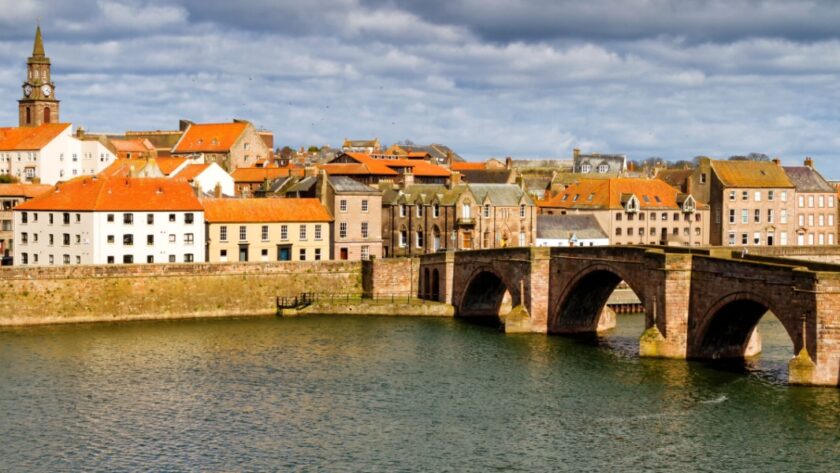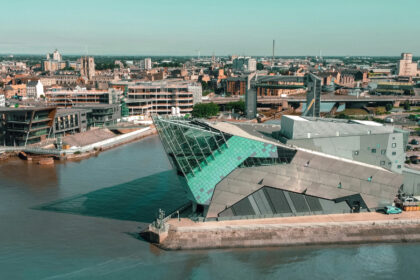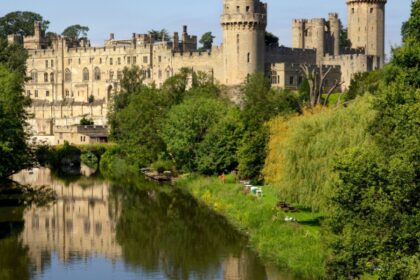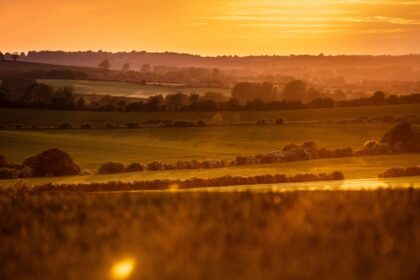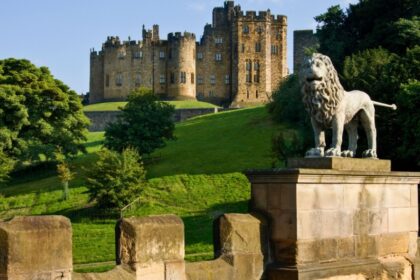Just before England runs out of road, before the River Tweed curls out into the North Sea, there is Berwick. A town that has changed hands more than a fiver in a pub quiz and somehow still manages to be distinctly itself. At once English and not quite. Scottish and not really either. It has been both, it has been neither, and now it is a perfectly strange little borderland that wears it’s history like an old jacket – faded, a bit frayed, but very much still in use.
This is England’s northernmost town but with enough Scots spirit to confuse even the hardiest of patriots. You will find Scotch Pies in the shops, and a football team that plays in the Scottish leagues. Meanwhile the Union Jack flaps over the town hall and there is a branch of Greggs right next to a town hall that dates back to the late 13th century. Berwick is full of these little contradictions. They are what make it so fascinating.
A Town Built for Battle
You cannot really understand Berwick without standing on it’s walls. These are no ordinary town walls. They are great defensive bulwarks built by Elizabeth I in the late 1500s when the threat of Scottish invasion still felt very real. Berwick was a prize then, a strategic linchpin on the frontier, and the English were determined to hold it. What they built was the most complete example of bastioned town defences in the country. They still stand today and you can walk their full circuit in less than an hour.
The walk itself is part history lesson and part sightseeing tour. The views over the Tweed estuary are spectacular, especially when the light comes slantwise off the water in the late afternoon. You can see salmon fishers in the river and seals bobbing out beyond the bridges. Inland the rooftops of Berwick stack up in pleasing disarray, punctuated by the occasional church spire or Victorian chimney pot.
Bridges and Borders
Few towns are defined by their bridges quite like Berwick. There are three in close succession. The Royal Border Bridge, a 28-arch viaduct built by the Victorians to carry trains north to Edinburgh. The Old Bridge, completed in 1624 and still a marvel of early engineering (sometimes compared to elephants marching across the river). And the New Bridge, a slightly utilitarian 20th-century effort that nonetheless offers lovely views back to the town.
Cross the Old Bridge and you are suddenly in Tweedmouth, which feels like a different place entirely even though it is really just another part of Berwick. A walk here gives you a quieter perspective on the town and brings you closer to the working river. There are fishing boats, a lifeboat station, and the long, low murmur of the tide.
In and Out of Scotland
Berwick changed hands between England and Scotland more than a dozen times during the Middle Ages. It was burned, sacked, rebuilt, besieged and then some. In 1296 it was the site of a notorious massacre when Edward I took the town and left it littered with bodies. In 1461 it was back with the Scots. In 1482 it was English again and it has remained so ever since, though it was never formally annexed. Even now there are conspiracy theories that Berwick is technically at war with Russia because of a clerical quirk during the Crimean conflict. None of this is true, of course, but it fits the character of the place rather well.
There is something quietly defiant about Berwick. It is not a town that shouts for attention. It simply gets on with being itself. You can feel that in the cobbled streets and tucked-away courtyards, in the independent shops and little art galleries, and in the people too – friendly, yes, but not overly fussed about selling you a version of the town that is anything other than honest.
Art, fish and chips and unexpected elegance
L.S. Lowry, the painter of matchstick men and smoking chimneys, spent a good deal of time in Berwick and produced some of his loveliest work here. You can follow the Lowry Trail around the town to see the scenes he captured and get a feel for how little has changed in places. The buildings still lean at odd angles and the alleyways still open suddenly onto unexpected views.
Then there is the food. Dotted around the centre are cafés, restaurants, independent bakeries and proper fish and chip shops. You can tuck into a generous portion by the quayside or take it to one of the benches along the town walls for the best seat in the house. Berwick also does a fine line in characterful pubs – The Barrels and The Curfew both offer good beer, friendly faces and plenty of atmosphere. For something quieter, the Granary Gallery often hosts excellent exhibitions in a smartly converted mill space overlooking the river. Berwick may not shout about its cultural credentials, but they’re very much there if you know where to look.
The Quiet Joy of a Town Slightly Out of Time
Berwick is not trying to be trendy. It does not chase the limelight. It remains a town of gentle edges and strong bones. It is a place where you can feel history underfoot and see it in the line of the rooftops. It has been a garrison town, a port, a battleground and a border post. Now it is simply Berwick. Which, as it turns out, is more than enough.
At a Glance
Where is it?
Right at the top of Northumberland, just before the Scottish border. Edinburgh is 56 miles to the north. Newcastle is 65 miles south.
Famous for
Its Elizabethan walls, three bridges, turbulent history and curiously Anglo-Scottish identity.
Best time to visit
Spring and early summer for long daylight and fewer crowds. The town is lovely in the off-season too.
While you’re there
Walk the town walls, follow the Lowry Trail, visit the Berwick Barracks and enjoy the beach at Spittal.
Don’t miss
Fish and chips at Coulls, a Lowry view from the quayside, and watching the trains curve over the Royal Border Bridge at sunset.

